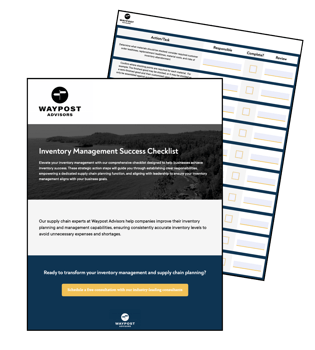What's the Cost of Delaying Inventory Improvements?
In the complex world of supply chain management, hidden costs, especially in inventory planning and management, often go unnoticed. Identifying and addressing these costs is crucial for enhancing efficiency and improving the bottom line. From excess stockpiling leading to increased warehousing expenses to stockouts resulting in missed sales opportunities, unoptimized inventory management affects the entire supply chain, impacting both operational performance and financial outcomes.
Identifying and Managing Hidden Costs in Supply Chain Inventory Management
Here are actions you can take to identify areas that are costing your organization and how you can make changes to improve your inventory management. 
Understanding the Impact of Unused Inventory:
Examine how long inventory remains unused or unsold. This scenario can lead to financial losses, as capital gets tied up in stock that doesn't generate revenue.
Example: Consider a manufacturing company specializing in automotive parts. They invested $300,000 in producing specific engine components, anticipating steady demand. However, when market demand shifted due to changes in automotive technology, these components became slow-moving, tying up substantial capital. To encourage sales, the company had to reduce the price by 35%, directly impacting revenue. Additionally, the bulky nature of these parts increased storage costs, and the risk of obsolescence loomed due to the fast-evolving industry, posing further financial risks.
At Risk or Obsolete Inventory:
Inventory that cannot be sold, or 'obsolete inventory', is a direct financial loss. Working with finance teams to analyze aging inventory helps identify items at risk of obsolescence.
Identifying Early Warning Signs of Obsolescence:
Slow-moving inventory and long Days Of Supply, the duration for inventory depletion, are indicators of potential waste. Ineffective End Of Life management and inventory adjustment discrepancies can signal inefficiencies.
Tracking Adjustments Between Physical Counts:
Monitor differences between system records and actual warehouse inventory. Establish processes for cycle counts and inventory adjustment approvals to minimize losses.
Implications of Expedited Freight:
Analyze instances where expedited freight was required due to inventory inaccuracies, highlighting areas for improvement in inventory tracking and management.
Impact on Customer Relations and Financial Implications Due to Inventory Shortages:
Identify inventory shortages that are leading to late or incomplete deliveries can result in customer chargebacks. This is particularly crucial in industries where customers impose penalties for late or incomplete deliveries.
Actionable Steps and Continuous Process Improvement
Start by examining the areas described above over a six-month period to gauge their financial impact. This analysis will guide where to focus your efforts and investment decisions for supply chain process improvements. Using a root cause analysis and reason coding offers an ideal approach for comprehending problematic areas and identifying necessary changes. For instance, implementing a quick 5-Why analysis for issues like expedited freight needs can provide valuable insights. Reason Coding, which involves categorizing incidents for trend analysis, supports continuous supply chain improvement strategies.
 If you want to improve your inventory management, our comprehensive checklist will help you achieve inventory success with strategic action steps that guide you through establishing clear responsibilities, empowering a dedicated supply chain planning function, and aligning with leadership to ensure your inventory management aligns with your business goals.
If you want to improve your inventory management, our comprehensive checklist will help you achieve inventory success with strategic action steps that guide you through establishing clear responsibilities, empowering a dedicated supply chain planning function, and aligning with leadership to ensure your inventory management aligns with your business goals.
Get your copy of the Inventory Management Checklist now.
Waypost Advisors is an end-to-end supply chain and resourcing solution. We offer expertise in procurement, inventory, project management, planning, transportation & warehousing to fit the needs of your B2B manufacturing or distribution company. Our advisors can provide you with the resources and expertise to tackle your supply chain challenges while allowing you to still focus on running your business.

